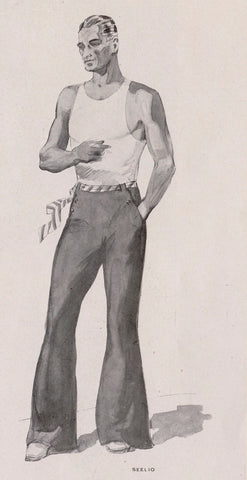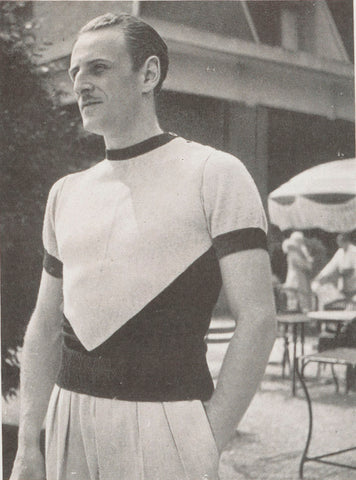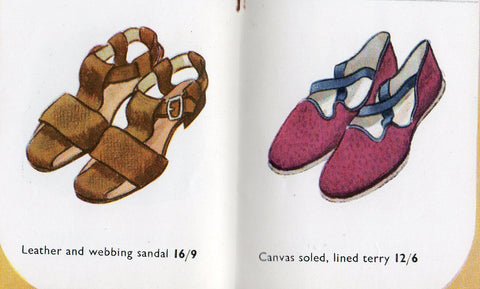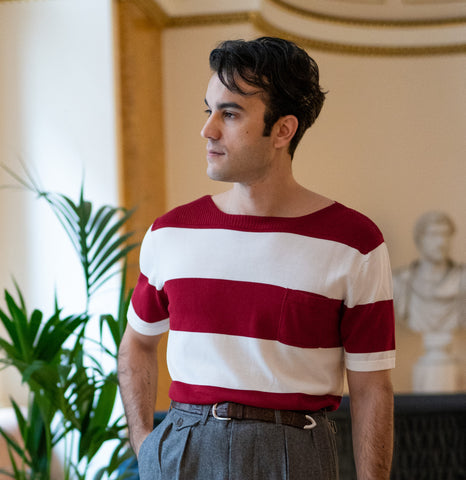The Riviera Look


When the designers at Cathcart decided they wanted to make some stylish and comfortable garments for men to wear in summer, they did their favourite thing: They took a deep-dive into the archives to find inspiration. And where better to find inspiration for summer wear than in the ground-breaking looks produced in France during the mid-20th Century? In the late 19th and early 20th Century the resorts of northern France became popular with wealthy British holidaymakers who visited coastal towns like Le Touquet where they enjoyed the wide sandy beaches, the golf course and the race course.

In the aftermath of the First World War, France once again became popular as a holiday location, with the world’s wealthy and beautiful people flocking to French coastal towns to enjoy the sun, sea and social scene. Hot on their heels came Europe’s burgeoning middle classes and increasing numbers of France’s own population. They were also followed by British film makers who, attracted by the bright and constant light, used Nice and other towns on the French Riviera as outdoor filming locations, allowing production to continue through the winter. Access to the sun, something that was limited in the UK, was a draw for wealthy Britons, as noted in one report: “Before the 1920s, exposure of the skin to the sun’s rays had been a mark of working-class roughness, especially in women. Now tanned skin became a ‘sign of affluence, suggesting sunbathing in the Riviera rather than potato picking in Essex’.” It further noted: “While Coco Chanel is generally credited with making the suntan fashionable, it had actually emanated earlier from the health spas of Germany and was now increasingly taken up by the rich in the resorts of the South of France. Women relished the freedom from the ‘purdah’ of white-skinned fashion.”


The French Riviera was also popular with European royals, the continent’s wealthy and fashionable people, actors, writers and artists. Early visitors included Queen Victoria whose son Prince Arthur later opened the ‘Promenade des Anglais’ on the Nice seafront, named in honour of the many British visitors. W. Somerset Maugham lived in at the Villa Mauresque at Saint-Jean-Cap-Ferrat from 1927, where he played host to the likes of Virginia Woolf, Noel Coward, H.G. Wells, Winston Churchill and the Aga Khan, until his death in 1965. Belgian writer George Simenon owned holiday homes in Juan les Pins and at Cannes, setting a number of his novels on the French Riviera. Henri Matisse lived in Nice from 1917 until his death in 1954, while Marc Chagall lived and worked in a small town seven miles outside the city. Picasso was another local resident, living at Vallauris between 1948 and 1955 before moving to the nearby town of Mougins, to which Winston Churchill was also a regular visitor. During the 1920s, Saint-Tropez attracted fashion designers such as Coco Chanel and Elsa Schiaparelli, before later becoming home to the legendary sex-symbol Brigitte Bardot.
Hollywood got in on the action as well, as noted in one report: “Travel to Mediterranean coastal resorts, available only to the upper classes between the wars, allowed the press to bring new images of glamour to those not able to afford such luxuries. Similarly, Hollywood film-makers were enthralled by the aristocratic glitter of sun-bronzed beach parties on the French Riviera and inevitably brought this to the screen and in turn to British cinemas.” In post-war years the Cannes Film Festival continued to bring Hollywood’s elite, along with the world’s aspiring stars, to the south of France.

And, in order to enjoy the hot days and balmy evenings, a whole new fashion scene developed for men. Consisting of casual, loose fitting garments, light weight fabrics, light colours and revolutionary designs, this new look for resort wear would eventually be christened ‘The Riviera Look’.
During the 1930s a number of French menswear companies produced an array of holiday-wear that allowed men to feel as glamorous as their cinematic heroes and Europe’s ultra-rich who were often seen mixing in the country’s most fashionable resorts. Brands such as David, F. Georges, Tunmer, Seelio and Knize created a distinct look that played an important role in making menswear more suited to hot weather, influencing designers worldwide.


In 1938 the French menswear journal ‘Adam’ described the style: “The quest for the sun poses a special challenge for clothing. There exists a fashion on the Cote D’Azur, whimsical and colourful, at one with the surroundings of this coast or the foggy mornings, the fresh evenings, where rainy days are unknown. This style remains tasteful, avoiding excess and is not garish.” For summer 1938 “the most fashionable colours will be yellow and Bordeaux red, with the full range of shades of blue which remain the favourite tones. For fabrics we offer you linen and exotic silks for shirts, shorts and trousers.”
So what exactly were the building-blocks of the ‘Riviera Look’?

Perhaps the starting points for ‘Riviera look’ were the established seaside and sporting fashions of the period. Nautical blazers worn with cream flannel trousers had been a popular look since before the First World War and this look continued into, and beyond, the 1920s. Added to that were the lightweight sports shirts, with attached soft collars, that were worn along with loose-fitting flannel trousers for playing tennis. Even before the look took off, the coastal towns of France had already been the source of some fashions. Hooped Breton jumpers were popular with Britons who sailed in and out of the ports of north-west France and braved the waves of the Bay of Biscay. Then, in the early 1920s, visitors to Biarritz on the south-west coast of France saw the brick-red trousers favoured by the locals and decided they were better suited for playing tennis on the clay courts of the region since, unlike their usual white flannels, they wouldn’t show clay stains. These trousers were taken back to the UK where they soon influenced the colour choices for the new fashion of Oxford Bags, the wide-cut flannels that emerged in an array of vibrant colours during spring and summer 1925.

Sailor Trousers:
One of the more distinctive, and short-lived, styles was the fashion for flared trousers which emerged in the early 1930s. These trousers, which opened at the side, rather than with a front fly, in an imitation of nautical styles, had a brief period of popularity. Initially they were worn by both men and women but were a challenge for those men who saw the side fastening as something quite feminine meaning that, whilst women continued to wear the style, men soon returned to their preference for front-opening trousers. Furthermore, although acceptable for resort wear, the flared trousers didn’t translate to wider use making them a less versatile garment for those on a limited budget than more traditionally styled trousers.


Lightweight suits:
Whilst a major element of the ‘Riviera look’ were the casual styles of open-neck sports shirts, shorts and sandals, there remained a demand for summer suits that could be worn when the weather allowed and for more formal events.



In particular, visits to popular northern resorts such as Le Touquet and Deauville, where the temperatures were lower and the winds more bracing, enjoyed showing off their fashionable light coloured suits.


Suits were also adaptable: They could be worn with a polo shirt and sandals, then dressed up with shirt, tie and shoes for the evening:


For those visiting the more exclusive clubs, bars, casinos and restaurants – or simply for those who enjoyed dressing up for the evening – dinner suits (known as Le Smoking in France) remained popular resort wear. Lighter weight wools were favoured for black suits, whilst black trousers were often combined with ivory or cream dinner jackets. An example of a fashionable dinner suit for summer 1938, available through the menswear brand ‘Barnett’, was described in ‘Adam’: “the dinner jacket has a narrow-wrap with two buttons, a long shawl collar made from white Shantung silk and is worn with trousers made from Fresco or light rayon.” This was an outfit that was suitable for “evening galas, fetes and receptions requiring light and elegant evening dress in keeping with the Riviera.”

Loose fitting, light coloured trousers:
The loose-fitting flannel trousers that emerged in the UK in 1925 when ‘Oxford Bags’ became popular, were ideal for visitors to the French coastal resorts in the 1930s. The style, often with a hem circumference of up to 24 inches, allowed air to circulate freely around the legs. Available in lightweight flannel cloth for balmy evenings, or in linen or cotton for the heat of the day, the style was one of the staples of the ‘Riviera Look’. The favoured colours were white and cream, although grey remained an elegant alternative for more formal wear.


These trousers were just as suited to being dressed up with a blazer in the evening as they were for combining with a casual shirt in the daytime, or for rolling up when on the deck of a sailing boat.

Casual Shirts:
The 1920s had seen sports shirts growing in popularity. With a comfortably loose fit, attached soft collar and made in lightweight cottons and lines, these shirts were favoured for both sports and leisure. Men simply favoured being comfortable over having their necks and wrists constricted by stiff collars and cuffs. For summer holidays in the hot climes of southern France, sports shirts developed into casual summer shirts. Comfort was further increased by the removal of collar stands from some shirts and the introduction of straight hems which meant the shirt could be worn untucked.



The short sleeved cotton knit polo shirts, once the preserve of polo players and tennis stars, became a go-to outfit for millions of men in search of comfort and leisure. Soon the one-colour look favoured on tennis courts became a thing of the past as new styles emerged with contrast collars and sleeves, contrast trims, and brightly coloured multi-striped hoops made a regular appearance on the beaches.


Polo shirts were also made with button fronts, open necks, v necks, lacing fronts and zips. Double breasted sports shirts emerged, short sleeved shirts became popular and colourful patterned beach-shirts also became available.


This period also saw the arrival of the t-shirt as outer wear, rather than simply as an undershirt. Like polo shirts, t-shirts came in bright colours, with multi-coloured hoops and with contrasting trims. Available in cotton, rayon, cotton jersey knits, among other fabrics, they became a stylishly casual choice, setting the trend for the rest of the century.



Similarly, vests appeared as casual wear, no longer being forever concealed under shirts.


Shorts:
In an era when men’s legs were seldom seen outside of sports arenas or Scout camps, the men visiting French resorts soon became eager to challenge the more conservatively minded, cast off their long trousers, and get some sun on their legs. The shorts of the era were tailored garments, their uppers based on the trouser fashions of the day, routinely being cut long and loose fitting. Pleats, belt loops and side fasteners were seen on shorts to allow for a comfortable drape.


They often copied the fashion for suit trousers by adding a small buttoning pocket under the waistband. They stylish and convenient feature allowed men to carry their money and keys without the need to wear a jacket.

Although the pockets meant a jacket wasn’t absolutely necessary, shorts were also available with matching jackets, to make a stylish, casual and comfortable suit.
Dressing Gowns:
For the wealthy holidaymaker who could transport plenty of luggage, elegant silk robes and dressing gowns were an essential element of the complete look. They were practical for throwing on over a damp swim suit yet, with their modern designs, they made a stylish statement.


Footwear:
When looking back on the beach shoes of the 1930s, the modern observer is soon struck by the look of the sandals worn by men. In particular, the bright colours, the thick – almost platform – soles and leg-lacings immediately strike the modern viewer as effeminate. For men brought up on the conservative and, more often than not derided, sandals of the late 20th Century, 1930s sandals appear revolutionary. A late 1930s catalogue for Simpsons of Piccadilly, one of London’s most popular menswear shops, shows the range of styles available, including features such as thick cork soles, bright colours and terry-towelling uppers:



In addition to sandals, there were rope-soled espadrilles that laced up around the ankles, soft cotton lace-up beach shoes with rubber soles that were derived from lightweight tennis shoes, or – for more formal events – spectator shoes.


Cathcart Summer 2023:
The two elements of the Riviera that most inspired our design team for this summer were boat-neck t-shirts and casual jackets. These two garments were essential elements of the classic mid-20th Century ‘Riviera look’ and were the items that our design team had put at the top of their own lists of what they wanted to own:
Boat-neck t-shirts:
The boat-neck t-shirt is a garment with a low, wide neck opening. The wide neck opening means that the neck appears as a straight line, rather than the curved line of the neck opening on a traditional t-shirt.

The style came courtesy of the blue and white hooped shirt – or marinière - worn by sailors of the French Navy under their tunics. Legend has it that the wide neck opening made it easy for the garment to be pulled off by a sailor finding himself overboard and needing to tear off heavy clothing. Of course, as with most stories about fashion, there are alternative histories, with one version stating that the blue and white hoops were designed to make a sailor clearly visible if he fell overboard.

The look was adopted by, among others, the Russian Navy and was later worn by Russian marines and airborne forces in a style known as the ‘Telnyashka’. In later years the look was often seen being worn my members of the American punk band, The Ramones.
Inspired by these looks, Cathcart has produced a boatneck t-shirt in a fully fashioned fine knit in a blend of rayon, cotton and silk yarns, to give a cool hand-feel. Most notable is the classic, distinctive ribbed collar that sits perfectly on the collarbone.

Casual Jackets:
In keeping with the fashion for relaxed styles, the designers of the 1930s came up with a number of innovations that became popular in France’s seaside resorts. One of the more revolutionary looks were the jackets known to Americans as ‘cardigan jackets’, ‘collarless sports jackets’ in the UK, but referred to in France simply as ‘sports jackets without a collar or lapel’.

Some summer jackets adopted the period’s popular belted look, giving them a look similar to the ‘safari’ or ‘bush’ jackets favoured across the British Empire.

Among the garments that most influenced our designers were the lightweight casual jackets that emerged during the period. Some had open shirt-style collars. This blend of the shirt and jacket, similar to the ‘Hollywood jackets’ popularised in the USA, would eventually become – in the parlance of the 21st Century – the Shirt-Jacket, or ‘Shacket’.

With a construction based on that of shirts, yet often featuring a pocket configuration copied from sports jackets, these were a hybrid garment. They could be a stand-alone garment, thrown over the naked torso after swimming. They could also be worn over a t-shirt, polo shirt or lightweight knit, or even dressed up with shirt and tie for the evening. They were available in lightweight ‘dry’ fabrics, often linen or cotton, with some versions available in Shetland wool.


Inspired by the above jackets, the Cathcart team has designed this luxurious Lido Jacket. This breezy summer jacket features the iconic 'Lido' collar, button cuffs, a relaxed fit, large front pockets, and is made of a premium linen-rayon blend with an exclusive Cathcart print in cream.

